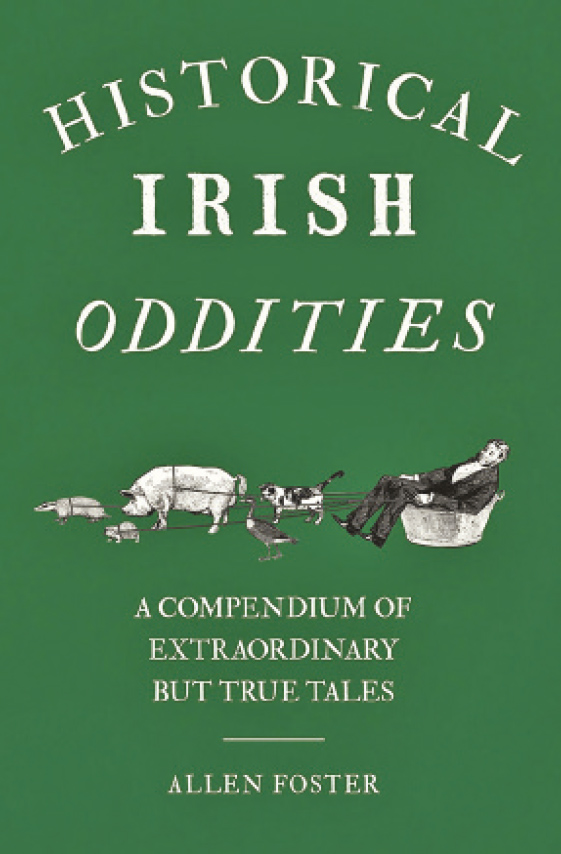
By Eoin Meegan
Historical Irish Oddities by Allen Foster is a delightful romp through the quirkiness and eccentricities that lie behind the ordinary and seemingly banal.
The subtitle of the book is “A Compendium of Extraordinary but True Tales.” Though it is uncertain how many of them are verifiable, however, this is not likely to bother too many. Here we have a carefully gathered collection of old country legends passed down by word of mouth, probably around the fireplace on dark winters’ nights.
Within the pages you will find such delightful ditties as the story of the battle between the hen and the rat, which took place allegedly in a pub in the Naul, the famous Connemara pony who was waked, the baby who was left out in a pigsty only to be saved from the hogs by the farmer’s dog.
Others border more on the supernatural: like the woman who was almost buried alive, the girl who could only read upside down, the man who was hanged twice, and the man who insisted on being evicted from his home in his coffin. A little spooky at times. But delivered with wry amusement.
A curious story of ethnicity tells of a diminutive race of people who once inhabited parts of Ireland. They were named ‘the Ranties,’ but unfortunately became extinct either during the famine, or through in-breeding. Perhaps here we have the origin of our stories of the ‘little folk.’
Elsewhere, there is the touching romance between Mary Tudor and Christian Wilson, whose families were a bit like the Montagues and the Capulets and tried to thwart their love.
Or the tale of a certain James Liddy who apparently invented the spring mattress. The story goes that when Liddy emigrated to America he was so taken with the springs in seats that he decided to experiment with his bed. He then attached a number of these springs to a board and put a mattress over it, thus creating the spring mattress. Unfortunately for him, he never patented his invention.
Ringsend gets a couple of mentions. There is the story of two fisherman from the village named James Hodgens and George Roden who were fishing off Howth in 1891. When they pulled in their net they discovered a man’s body there. To his horror Roden recognised him as his own brother who unfortunately was lost at sea a year earlier. Another story is that of a schooner which collided with a tram on the Victoria drawbridge in 1921.
One story guaranteed to elicit a smile is that of the postmaster of Lismore, in Waterford, who travelled from that town to Fermoy in a tub pulled by the extraordinary combination of a pig, a badger, two cats, a goose and a hedgehog; while wearing a bright red nightcap. By all accounts he did it for a bet.
This was in 1821 and as there were no cameras around to record the event, or anyone to take a selfie, the authenticity of this expedition will have to ever remain a mystery: however reports abound that the postmaster collected his winnings!
Historical Irish Oddities is the kind of book you might dip into whenever you take the fancy, rather that read from cover to cover, always finding something new.
It would make an interesting perusal on a train, or while away a few hours on a rainy day. I think it could have been improved by grouping the various stories under themed headings, as at times it gets a little confusing without this categorisation. But definitely will raise a chuckle.



